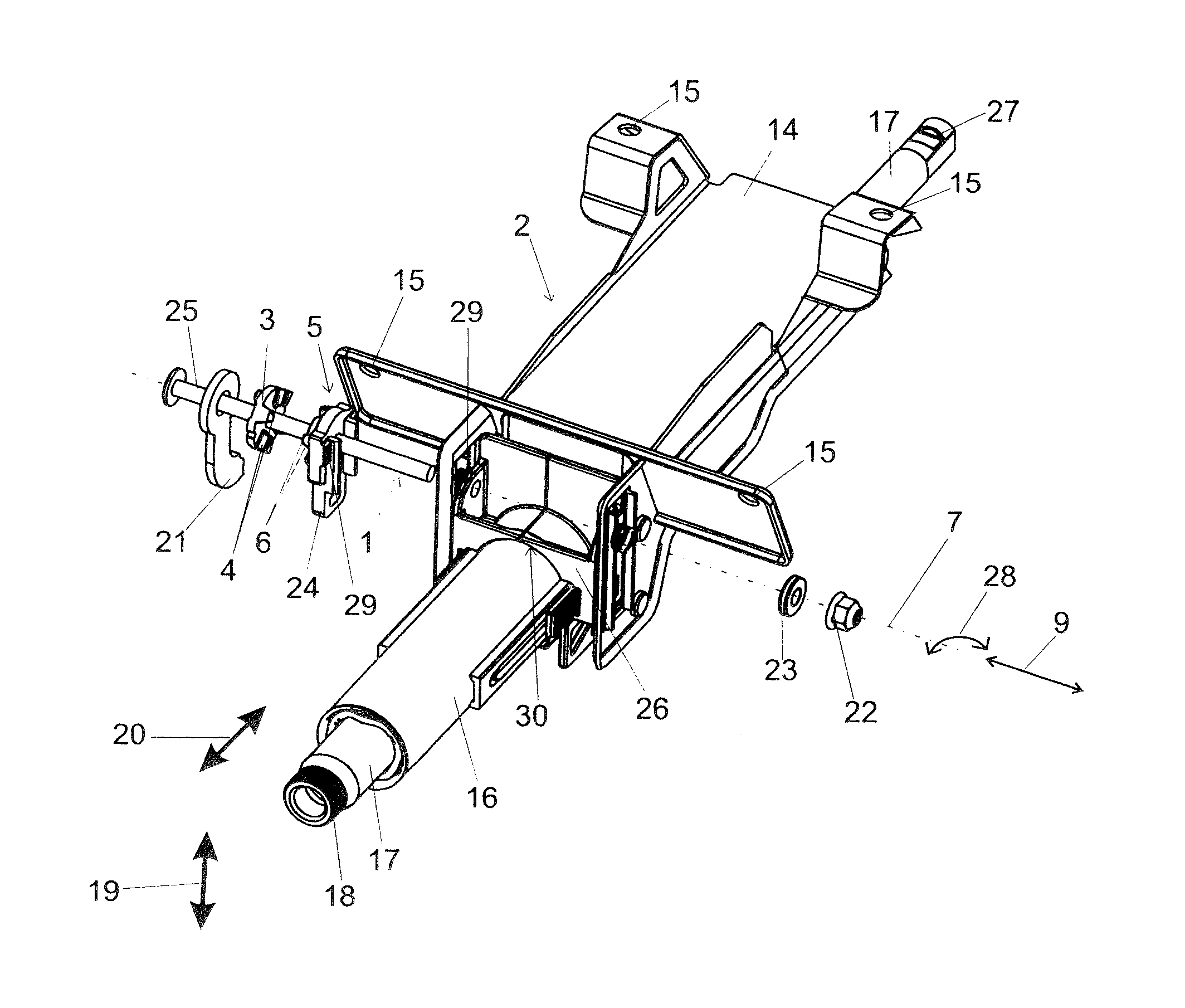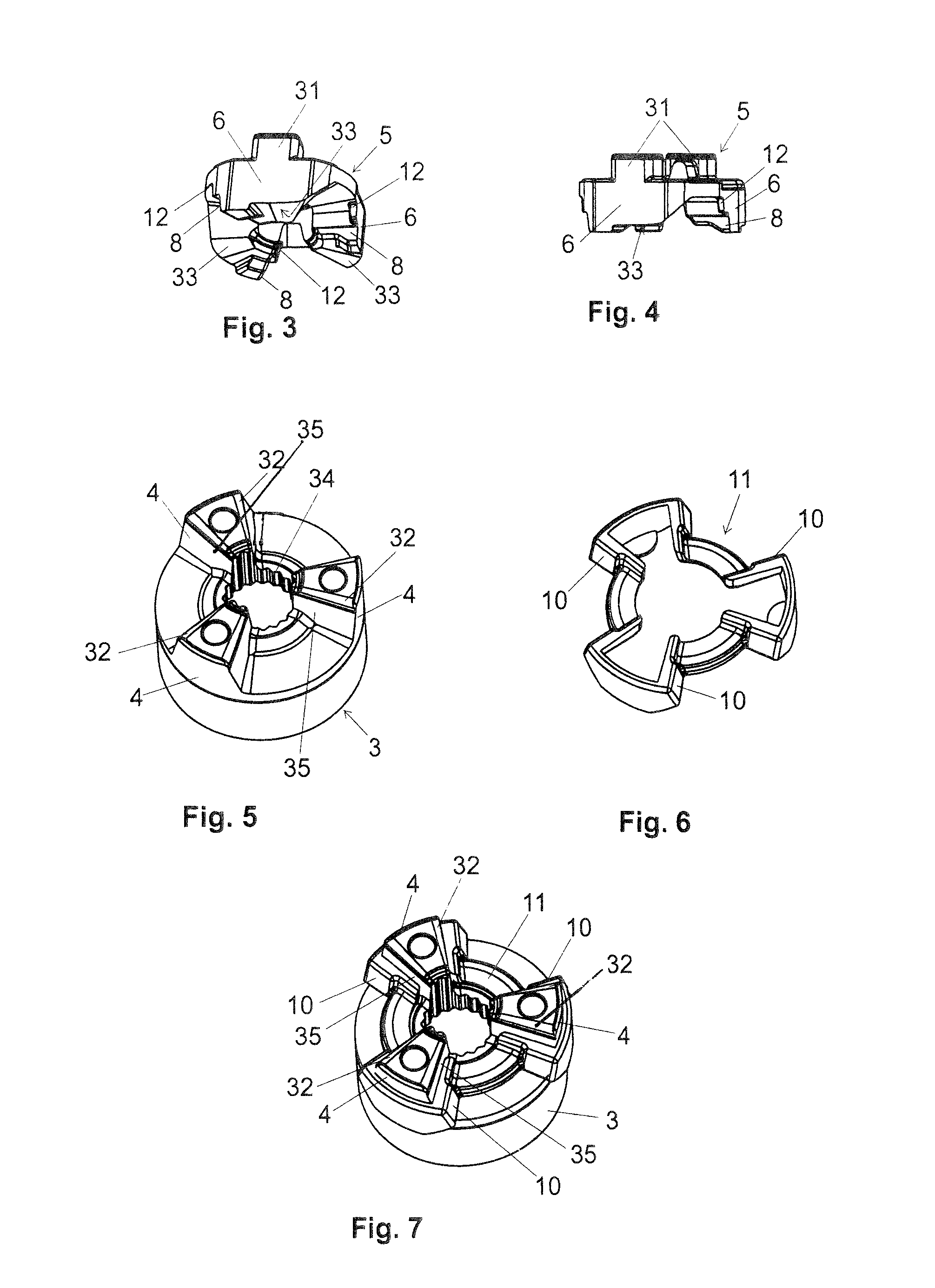Locking device for an adjustable steering column
a locking device and steering column technology, applied in steering parts, vehicle components, transportation and packaging, etc., can solve problems such as potential vibration and noise reduction, and achieve the effect of avoiding vibration and rattling noise in the open position of the manual operating lever, simple and cost-effective production, and comfortable and smooth limitation function
- Summary
- Abstract
- Description
- Claims
- Application Information
AI Technical Summary
Benefits of technology
Problems solved by technology
Method used
Image
Examples
Embodiment Construction
[0026]In FIG. 1 is depicted an adjustable steering column 2 implemented according to the invention, wherein, first, the features known per se in prior art of this steering column will be briefly described without implying that in the steering columns 2 according to the invention these features known per se in prior art need to be realized.
[0027]In the embodiment example depicted in FIG. 1, the adjustable steering column 2 comprises a bracket unit 14 which is secured by means of securement plates 15 on the body of a motor vehicle. On the bracket unit 14, optionally via a corresponding intermediate lever 26 known per se, a steering spindle bearing unit 16 is displaceably supported. To enable displacement, the securement device 1 must first be brought into its open position. In this open position of the securement device 1, the steering spindle bearing unit 16 together with the steering spindle 17 can be displaced in the length and / or height direction. In the depicted embodiment exampl...
PUM
 Login to View More
Login to View More Abstract
Description
Claims
Application Information
 Login to View More
Login to View More - R&D
- Intellectual Property
- Life Sciences
- Materials
- Tech Scout
- Unparalleled Data Quality
- Higher Quality Content
- 60% Fewer Hallucinations
Browse by: Latest US Patents, China's latest patents, Technical Efficacy Thesaurus, Application Domain, Technology Topic, Popular Technical Reports.
© 2025 PatSnap. All rights reserved.Legal|Privacy policy|Modern Slavery Act Transparency Statement|Sitemap|About US| Contact US: help@patsnap.com



